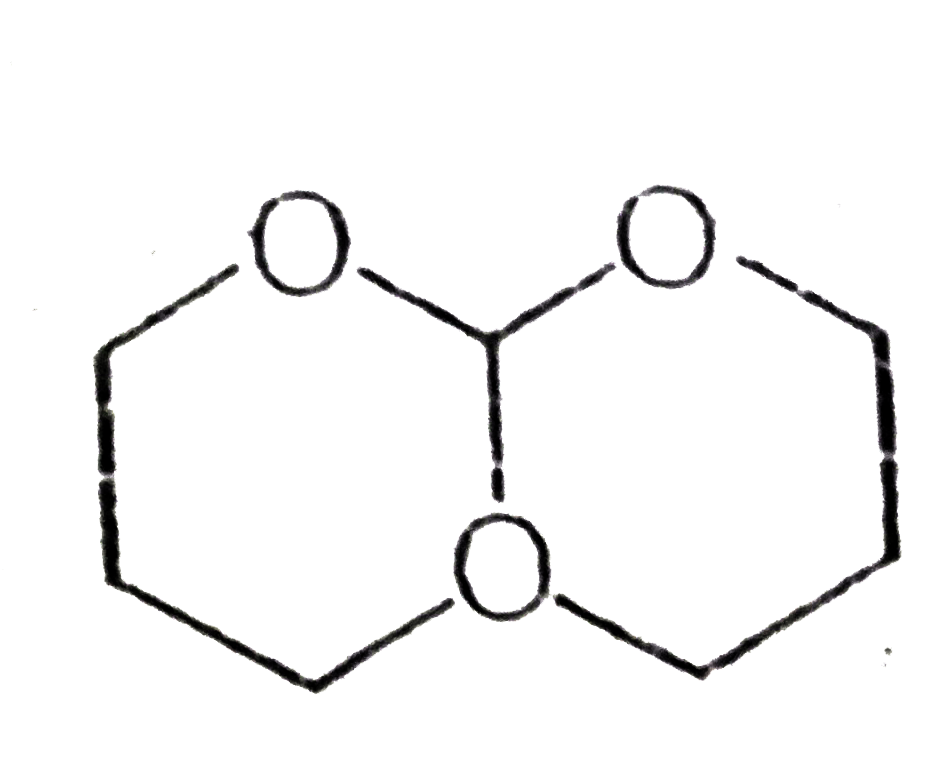Most acidic species among the following is




The correct Answer is:B
To determine the most acidic species among the given options, we need to analyze the stability of the conjugate base (X-) formed when the acidic species (HX) donates a proton (H+). The more stable the conjugate base, the stronger the acid.
1. Identify the Acidic Species:
We have several species (let's denote them as A, B, C, and D). We need to evaluate each one to determine which can donate a proton (H+) and form the most stable conjugate base.
2. Understand Acidic Properties:
The acidic property of a compound is determined by its ability to release H+. This release is favorable if the resulting conjugate base (X-) is stable.
3. Evaluate Each Option:
- Option A: This species has multiple hydrogen atoms that can be removed. However, when we analyze the stability of the resulting conjugate base, we find that the presence of electronegative oxygen atoms destabilizes the negative charge due to their electron-donating (+M) effect. Thus, the conjugate base formed from option A is not stable.
- Option B: Similar to option A, but with sulfur instead of oxygen. Sulfur is less electronegative than oxygen, which means it has a weaker +M effect. Therefore, the conjugate base formed from option B is more stable than that from option A, but still not the most stable.
- Option C: This option has a carbon atom that separates the acidic hydrogen from the electronegative oxygen atoms. When the hydrogen is removed, the resulting negative charge is not stabilized by resonance with the oxygen atoms. Instead, the electronegative oxygens exert a -I effect, pulling electron density away from the negative charge, which stabilizes it. Thus, the conjugate base from option C is more stable than those from options A and B.
- Option D: This species lacks any electronegative groups that could stabilize or destabilize the negative charge. Therefore, it is less stable than option C but more stable than A and B.
4. Determine the Most Acidic Species:
After comparing the stability of the conjugate bases formed from each option, we conclude that option C produces the most stable conjugate base. Therefore, it is the most acidic species among the given options.
Final Answer:
Option C is the most acidic species.
We have several species (let's denote them as A, B, C, and D). We need to evaluate each one to determine which can donate a proton (H+) and form the most stable conjugate base.
The acidic property of a compound is determined by its ability to release H+. This release is favorable if the resulting conjugate base (X-) is stable.
- Option A: This species has multiple hydrogen atoms that can be removed. However, when we analyze the stability of the resulting conjugate base, we find that the presence of electronegative oxygen atoms destabilizes the negative charge due to their electron-donating (+M) effect. Thus, the conjugate base formed from option A is not stable.
- Option B: Similar to option A, but with sulfur instead of oxygen. Sulfur is less electronegative than oxygen, which means it has a weaker +M effect. Therefore, the conjugate base formed from option B is more stable than that from option A, but still not the most stable.
After comparing the stability of the conjugate bases formed from each option, we conclude that option C produces the most stable conjugate base. Therefore, it is the most acidic species among the given options.
Option C is the most acidic species.
Topper's Solved these Questions
- ORGANIC CHEMISTRY: SOME BASIC PRINCIPLE AND TECHNIQUESBook:AAKASH INSTITUTE ENGLISHChapter:ORGANIC CHEMISTRY: SOME BASIC PRINCIPLE AND TECHNIQUESExercise:SECTION-C OBJECTIVE TYPE QUESTION (MORE THAN ONE OPTIONS ARE CORRECT)
Explore 18 Videos
- ORGANIC CHEMISTRY: SOME BASIC PRINCIPLE AND TECHNIQUESBook:AAKASH INSTITUTE ENGLISHChapter:ORGANIC CHEMISTRY: SOME BASIC PRINCIPLE AND TECHNIQUESExercise:SECTION-D LINKED COMPREHENSION TYPE QUESTIONS
Explore 7 Videos
- ORGANIC CHEMISTRY: SOME BASIC PRINCIPLE AND TECHNIQUESBook:AAKASH INSTITUTE ENGLISHChapter:ORGANIC CHEMISTRY: SOME BASIC PRINCIPLE AND TECHNIQUESExercise:ASSIGNMENT SECTION-A COMPETITION LEVEL QUESTIONS
Explore 50 Videos
- ORGANIC CHEMISTRY : SOME BASIC PRINCIPLES AND TECHNIQUES Book:AAKASH INSTITUTE ENGLISHChapter:ORGANIC CHEMISTRY : SOME BASIC PRINCIPLES AND TECHNIQUES Exercise:Assignment(Section-D)(Assertion - Reason Type Questions)
Explore 15 Videos
- POLYMERSBook:AAKASH INSTITUTE ENGLISHChapter:POLYMERSExercise:ASSIGNMENT (SECTION-D)
Explore 13 Videos
Similar Questions
Most basic species amongst the following is
View SolutionMost acidic oxide among the following is
View SolutionThe most acidic oxide among the following is
View SolutionThe most acidic oxide among the following is
View Solution
Themost acidic portion among the following is
View SolutionThe achiral species among the following is :
View SolutionElectron deficient species among the following is
View SolutionThe most acidic compound among the following is
View SolutionLewis acid among the following is
View SolutionThe optically active species among the following is:
View Solution